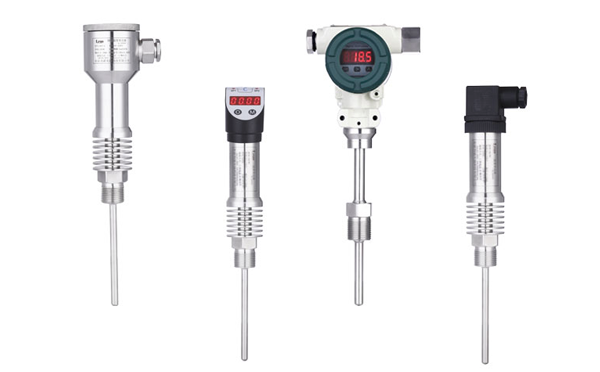
 Common Problems of RTD Temperature Sensor in Industrial Temperature Measurement
Common Problems of RTD Temperature Sensor in Industrial Temperature Measurement
Q&A on how RTD temperature sensors measure temperature changes by tracking changes in wire resistance. The resistance value of metal wire is known, so the change of resistance value is an accurate representative of temperature change. Resistance temperature detector (RTD) is a temperature sensor based on metal resistor, whose resistance value changes with temperature. Sometimes called resistance thermometers, RTD temperature sensors are often used in laboratory and industrial applications because they can provide accurate and reliable measurements over a wide temperature range.
How does the RTD temperature sensor work?
The metal wire in the RTD sensor has a known resistance change relative to the temperature change, so the RTD sensor can output an accurate measurement of the temperature change. This reading is either sent directly to the local display or the transmitter sends the reading to a remote control location.
What are the advantages and disadvantages of RTD?
advantage:
Accurate and reliable temperature measurement in a wide temperature range
Easier to install, calibrate, and maintain than thermocouples, bimetallic thermometers, and digital thermometers
Compared with other temperature measurement technologies, the readings are highly stable and repeatable
Disadvantages:
The cost is about twice that of thermocouple
Do not use above 900 – 1000 ° F (482 – 538 ° C
Vulnerable to vibration or accidental damage
What are the different types of RTD temperature sensors?
Three types of RTD temperature sensors are commonly used in today's industrial applications:
The wound RTD element consists of a metal wire - usually platinum, but also copper or nickel - wound on a glass or ceramic spool and sealed with glass.
The partially supported wound RTD element is made by inserting and connecting a small coil coil to one side of the ceramic insulator hole.
In a thin film RTD element, a thin layer of platinum or metallic glass paste is deposited on the ceramic substrate. These sensors provide the highest accuracy and longest service life, but are usually more expensive than the other two types.
Why is platinum the most commonly used metal in RTD temperature sensors?这种贵金Genus has many beneficial properties:
It is chemically inert.
It has a nearly linear relationship between temperature and resistance.
Its resistance temperature coefficient is large enough to produce measurable resistance changes with temperature.
High stability; The resistance of platinum changes little with time.
What is the difference between two wire, three wire and four wire RTDs?
The more wires used, the more accurate the RTD.
For a two-wire RTD element, the two conductors supplying the excitation current and the two conductors measuring the voltage are the same.
The most common type in modern industrial applications, three wire RTDs use Wheatstone bridge measurement circuits to compensate for the resistance of copper leads (copper is cheaper than platinum main). Both mainlines A and B are the same length and are usually made of platinum. This is because the Wheatstone bridge must make the impedances of wires A and B (each acting as the other leg of the bridge) cancel each other, and then wire C can act as a sensing lead with microamp current.
Four wire RTD can more completely compensate the resistance of the wire, and the wire length is a less important constraint. This provides significantly improved accuracy at the cost of only a small amount of copper extension wire.
Tel./WeChat 18717811268 Huang Gong sales@weilianchina.com


